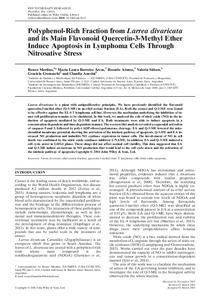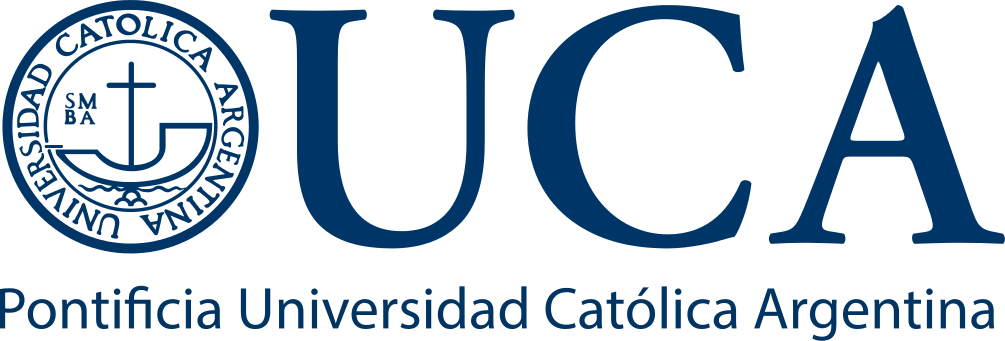Por favor, use este identificador para citar o enlazar este ítem:
https://repositorio.uca.edu.ar/handle/123456789/15337| Título: | Polyphenol-rich fraction from Larrea divaricata and its main flavonoid Quercetin-3-Methyl Ether induce apoptosis in lymphoma cells through nitrosative stress | Autor: | Martino, Renzo Barreiro Arcos, María Laura Alonso, Rosario Sülsen, Valeria Cremaschi, Graciela A. Anesini, Claudia |
Palabras clave: | APOPTOSIS; LARREA DIVARICATA; LINFOMA DE CELULAS T; ETIL ACETATO; OXIDO NITRICO; POLIFENOLES; QUERCETINA; LINFOMAS | Fecha de publicación: | 2016 | Editorial: | Wiley | Cita: | Martino, R., et al. Polyphenol-rich fraction from Larrea divaricata and its main flavonoid Quercetin-3-Methyl Ether induce apoptosis in lymphoma cells through nitrosative stress [en línea]. Phytotherapy Research. 2016, 30(7) doi:10.1002/ptr.5615 Disponible en: https://repositorio.uca.edu.ar/handle/123456789/15337 | Resumen: | Abstract: Larrea divaricata is a plant with antiproliferative principles. We have previously identified the flavonoid quercetin-3-methyl ether (Q-3-ME) in an ethyl acetate fraction (EA). Both the extract and Q-3-ME were found to be effective against the EL-4 T lymphoma cell line. However, the mechanism underlying the inhibition of tumor cell proliferation remains to be elucidated. In this work, we analyzed the role of nitric oxide (NO) in the induction of apoptosis mediated by Q-3-ME and EA. Both treatments were able to induce apoptosis in a concentration-dependent and time-dependent manner. The western blot analysis revealed a sequential activation of caspases-9 and 3, followed by poly-(ADP-ribose)-polymerase cleavage. EA and Q-3-ME lowered the mitochondrial membrane potential, showing the activation of the intrinsic pathway of apoptosis. Q-3-ME and EA increased NO production and inducible NO synthase expression in tumor cells. The involvement of NO in cell death was confirmed by the nitric oxide synthases inhibitor L-NAME. In addition, EA and Q-3-ME induced a cell cycle arrest in G0/G1 phase. These drugs did not affect normal cell viability. This data suggested that EA and Q-3-ME induce an increase in NO production that would lead to the cell cycle arrest and the activation of the intrinsic pathway of apoptosis. Copyright © 2016 John Wiley & Sons, Ltd. | URI: | https://repositorio.uca.edu.ar/handle/123456789/15337 | ISSN: | 0951-418X 1099-1573 (online) |
Disciplina: | MEDICINA | DOI: | 10.1002/ptr.5615 | Derechos: | Acceso Restringido | Fuente: | Phytotherapy Research. 2016, 30(7) |
| Aparece en las colecciones: | Artículos |
Ficheros en este ítem:
| Fichero | Descripción | Tamaño | Formato | Login |
|---|---|---|---|---|
| polyphenol-rich-fraction.pdf | 426,22 kB | Adobe PDF | SOLICITAR ACCESO | |
| thumb.pdf | 35,74 kB | Adobe PDF |  Visualizar/Abrir |
Visualizaciones de página(s)
46
comprobado en 27-abr-2024
Descarga(s)
14
comprobado en 27-abr-2024
Google ScholarTM
Ver en Google Scholar
Altmetric
Altmetric
Este ítem está sujeto a una Licencia Creative Commons

